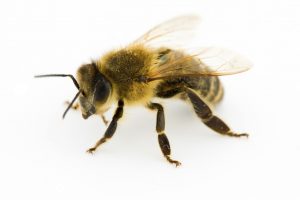Josée Asselin, from the Laurentians, was gardening at home when she got stung by a wasp. She began to have a reaction on her skin and decided to drive to the pharmacy for antihistamines.
Just before she reached the pharmacy, she started to have trouble breathing.
As Asselin walked into the pharmacy, pharmacist Ugo Deschênes saw that something was wrong. He asked a few questions and decided quickly to inject Asselin with life-saving epinephrine, using an EpiPen®. It quickly stabilized her breathing and other symptoms. Although Asselin did not want to go to hospital, the pharmacist insisted and called an ambulance. In the ambulance, Asselin experienced more severe symptoms on the way to the emergency room.
The ER doctor who treated her made it perfectly clear: the pharmacist had saved her life. Read the whole story from CBC News.
The most common sources of allergy from insect stings are honeybees, bumblebees, yellow jackets, hornets, wasps, or fire ants. Those who have been diagnosed with an insect sting allergy should always carry an epinephrine auto-injector and be prepared to use it if they are stung. It is also important to wear medical identification jewellery, so that others can help.
Insect allergy can start at any age in life and can take a person by surprise. If in doubt after being stung — even without a known allergy — it is crucial to seek immediate medical care.
Read more about insect sting allergy
Learn how to recognize the signs of an allergic reaction
Tags: Insect, Insect Stings, Sting

